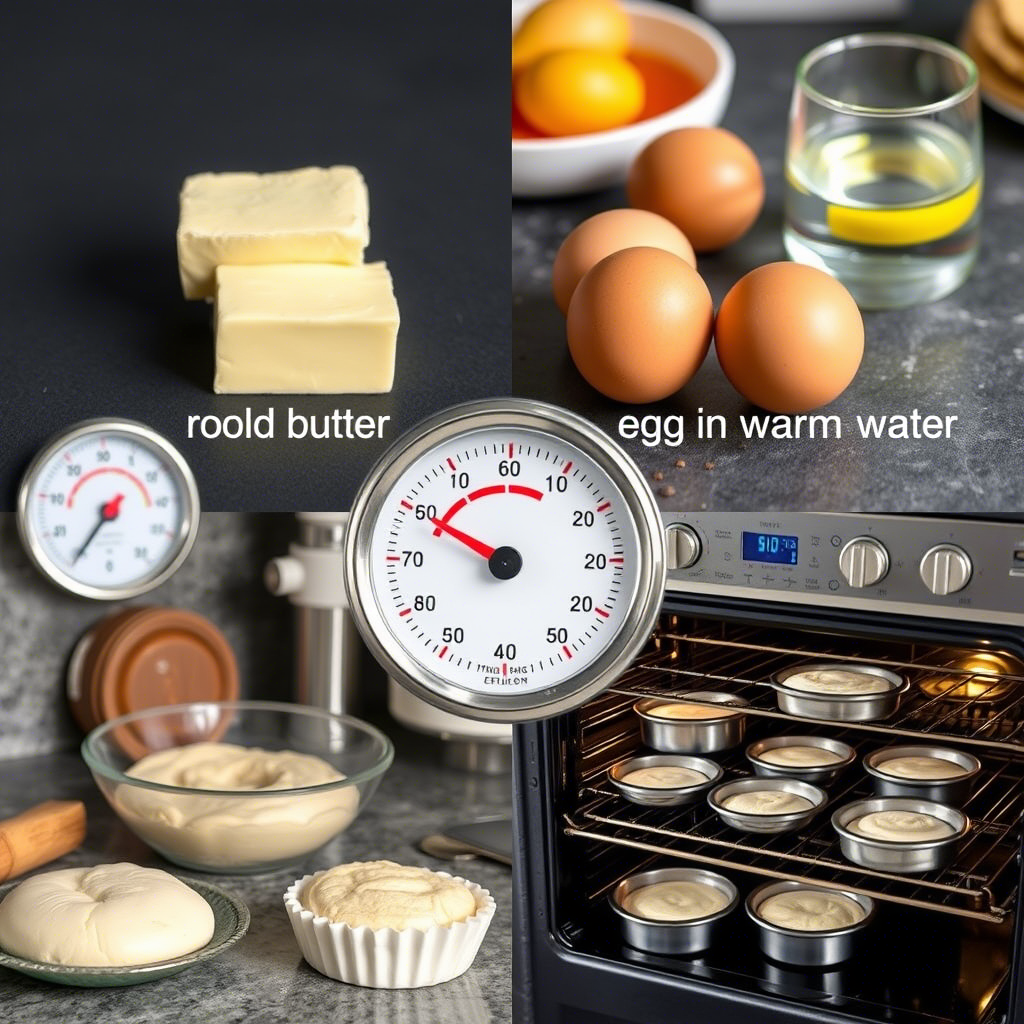Have you ever followed a baking recipe to the letter, only to end up with cookies that spread too much or cakes that collapse? If so, you’re not alone.
Many home bakers overlook one critical factor: temperature. While it might seem like just another detail, temperature plays an enormous role in determining whether your baked goods turn out perfectly or fall flat (literally).
In this guide, we’ll explore why temperature matters in baking and provide practical tips to help you achieve consistent results every time. Whether you’re a beginner or a seasoned baker, understanding how heat interacts with ingredients can transform your creations from good to great.
From ingredient preparation to oven settings, let’s dive into the science behind baking temperatures and discover how mastering them can elevate your skills in the kitchen.
1. The Role of Ingredient Temperatures
When it comes to baking, the temperature of your ingredients before they hit the mixing bowl is crucial. For instance, butter at room temperature behaves differently than cold butter—and both have their place depending on what you’re making.
When creaming butter and sugar for cookies or cakes, softened butter traps air more effectively, creating a light and fluffy texture. On the other hand, cold butter is essential for flaky pie crusts because it creates distinct layers as it melts during baking.
Similarly, eggs should be at room temperature when used in recipes requiring emulsification, such as cake batter. Cold eggs can cause separation, leading to dense textures. To speed up the process, try placing eggs in warm water for about 5 minutes before using them.
Understanding these nuances ensures that each ingredient performs its intended function, setting the stage for success.

2. Oven Calibration: Are You Cooking at the Right Heat?
Even if your recipe calls for a specific temperature, your oven may not be delivering exactly what it promises. Studies show that many ovens can vary by as much as 25°F (about 14°C) from their set point! This discrepancy can lead to undercooked centers or burnt edges, ruining even the most carefully prepared dish.
To avoid surprises, invest in an oven thermometer. These inexpensive tools ensure accuracy by showing the true internal temperature of your oven. Once calibrated, adjust your cooking times accordingly. For example, if your oven runs hot, reduce the temperature slightly to prevent overbrowning while ensuring proper doneness inside.
Additionally, consider rotating your pans halfway through baking to promote even heating, especially if your oven has hot spots.
3. Dough and Batter Resting Times: Patience Pays Off
Temperature also affects dough and batter after mixing but before baking. Allowing these mixtures to rest gives gluten strands time to relax, resulting in tender baked goods. For bread dough, resting allows yeast to ferment and develop flavor, while chilling cookie dough firms up fats, preventing excessive spreading.
A classic example is chocolate chip cookies. Chilling the dough for at least 30 minutes helps maintain its shape in the oven, producing thicker, chewier cookies instead of thin, crispy ones. Similarly, letting puff pastry chill between folds ensures crisp layers without melting prematurely.
By incorporating resting periods into your routine, you allow science to work its magic, enhancing both taste and texture.
4. Room Temperature vs. Ambient Conditions
Baking isn’t just about controlling the oven—it involves managing your environment too. Humidity, altitude, and ambient temperature all influence how ingredients behave.
High humidity can make flour absorb more liquid, altering consistency, while high altitudes require adjustments to leavening agents due to lower atmospheric pressure.
For instance, if you live in a humid climate, you might need to add a bit more flour to counteract moisture absorption. Conversely, dry climates may necessitate extra liquid to keep batters moist. Understanding these dynamics empowers you to adapt recipes based on where you bake.
Pro tip: Keep an eye on weather forecasts! A sudden change in conditions could impact your results, even if you follow the same steps as usual.
5. Perfecting Your Craft Through Practice and Observation
At its core, baking is both an art and a science. While precise measurements and temperatures are vital, experience teaches us to trust our senses.
Over time, you’ll learn to recognize signs of readiness, such as golden brown edges or a springy surface. Don’t be afraid to experiment with slight variations in temperature or timing to find what works best for you.
Remember, mistakes are part of the journey. Every “failed” batch offers valuable lessons. Consider keeping a baking journal to track changes and outcomes. Not only will this improve your skills, but it will also inspire confidence as you tackle increasingly complex recipes.
As Julia Child once said, “You don’t have to cook fancy or complicated masterpieces—just good food from fresh ingredients.” Apply this philosophy to temperature control, and watch your baking flourish.
Conclusion
Temperature is one of the most important factors in baking, influencing everything from ingredient behavior to final product quality.
By paying attention to details like ingredient temperatures, oven calibration, resting times, and environmental conditions, you can consistently produce delicious treats that impress family and friends alike.
So, the next time you preheat your oven or measure out ingredients, take a moment to consider the role temperature plays. With practice and patience, you’ll soon master this essential skill, turning every baking session into a rewarding experience.
Now it’s your turn! Have you noticed any differences in your baked goods when adjusting temperatures? Share your experiences in the comments below—or better yet, try experimenting with some of the tips discussed here and let us know how it goes! Happy baking!

Thayná Alves is an influential digital content creator who has carved out a significant space in the realms of technology, finance, and entrepreneurship. Through her blog, Newbacker.com , she stands out as an authentic and accessible voice for individuals seeking practical information about investments, innovation, and emerging trends in the financial market.
